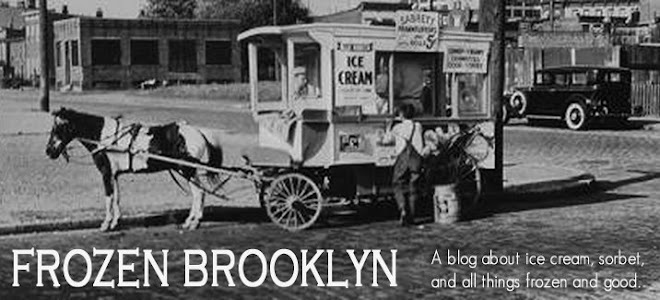
As summer comes to it's end, let us look back at this ice cream season and some of the innovations that have been infused into the world of frozen treats. The big issue, apparently, is melting. Or not melting. This might be the new, glass half-empty, half-full sort of thing, so take your pick. No judgments, I swear.
I am not sure exactly when melting became a sin, a cause for alarm, a situation that begs for scientific intervention. But alas, it can no longer be denied that we are well into what I can only assume is an ice cream crisis. A melt-down, if you will.
Like all food, ice cream as a temporary indulgence. A fling not unlike a Club Med encounter with an IT guy from Detroit that you'll (hopefully) never see again. Ice cream was never, ever meant to be marriage. An ice pop, no matter how delicious, is a fleeting pleasure.
The melt is just part of the whole frozen experience, the sweet memory. But like fire, man is now seeking to control the melt. Though I don't see people clamoring to make things that would make my life better such as the Non-Cancerous Suntan or the No-Hangover Martini, the Everlasting Sno-Cone may soon ubiquitous. Here are the three biggest players in the frozen for life movement.
- In June, Coldstone Creamery announced the No-Melt Ice Cream. New York Magazine asks, "If it doesn't melt, is it still ice cream?" Read all about it here.
- Unilever, the largest ice cream manufacturer in the UK, shrouds their kitchen science in environmentalism. Since their room temperature ice creams require no refrigeration, it is expending less energy during shipping as well as storage. Impressive doublespeak, friends! Read about it here.
- Gelatin is what they're using to make Slow Melt Popsicles. Keeping on the environmental tip, perhaps this could be sprinkled on the Polar ice caps, too. Just a thought. For some razor sharp observations on the subject, I insist you to read this post over at Bad Mommy Moments




No comments:
Post a Comment